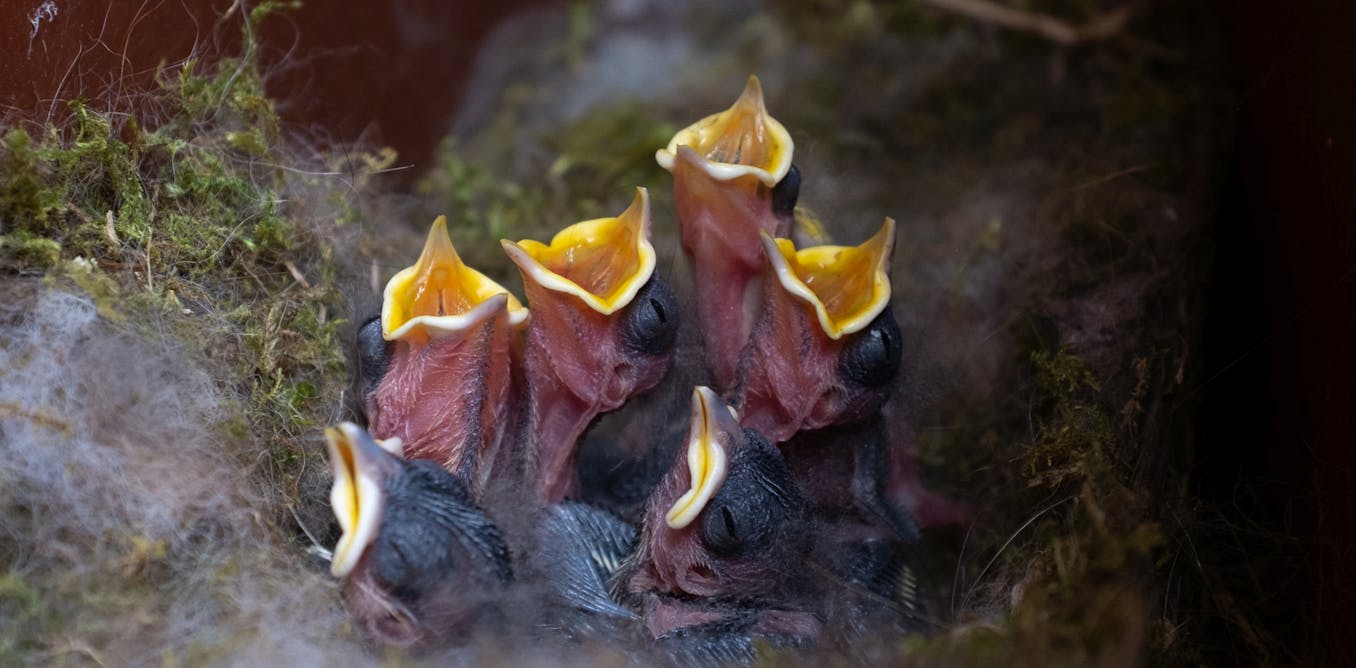As part of a team of ecologists, I’ve been studying aspects of great tit biology at Wytham Woods near Oxford. One aspect of our research is how climate change affects their breeding behaviour. So far, our research suggests that these great tits have been able to deal with climate change effects.
During early spring, usually in March, great tits (Parus major) abandon their winter flocks and start preparing for the breeding season. First they find a mate and build a nest. Then they raise naked and blind chicks, each weighing a bit more than one gram, into fully feathered fledglings.
A lot of our research focuses on analysing great tit reproductive phenology – that’s the study and analysis of seasonal events such as plant flowering, bird migration and reproduction.
Phenological events are not fixed in time as they depend on environmental factors such as weather conditions. Thus, they vary from year to year. For instance, the earliest recorded start date for great tit breeding in Wytham is March 27. The latest has been April 24, almost a full month later.
Those ARE some nice tits, all right
Love me some great tits
I’d like to see some great tit chicks make my wood their breeding ground, if y’knowhatImean…
...
(I’d like to turn the forest behind my house into a bird sanctuary, obviously. what did you think I meant?)



